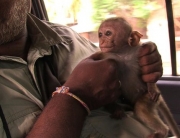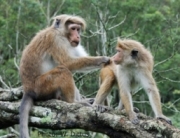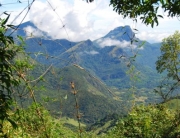Nov 2013: In the American Journal of Physical Anthropology Dr. Dittus considers changes in the anatomical distribution of body fat that were critical in the evolution from arboreal monkeys to terrestrial hominids.
Dittus, WPJ (2013). Arboral adaptations of body fat in wild toque macaques (Macaca sinica) and the evolution of adiposity in primates. American Journal of Physical Anthropology 152:333-344.
Abstract
There is a paucity of information on body composition and fat patterning in wild nonhuman primates. Dissected adipose tissue from wild toque macaques (Macaca sinica) (WTM), feeding on a natural diet, accounted for 2.1 % of body weight. This was far less than fatness reported for nonhuman primates raised in captivity or for contemporary humans. In WTM, fatness increased with age and diet richness, but did not differ by sex. In WTM (none of which were obese) intra-abdominal fat filled first, and “excess” fat was stored peripherally in a ratio of about 6:1. Intermuscular fat was minimal (0.1%). The superficial paunch held <15% of subcutaneous fat weight in contrast to its much larger proportions in obese humans and captive monkeys where most added fat accumulates subcutaneously. With increasing total adiposity, accumulating fat shifted in its distribution among 8 different main internal and peripheral deposit areas – consistent with maintaining body balance and a low center of gravity. The available data suggest that, in arboreal primates, adaptations for agile locomotion and terminal branch feeding set constraints on the quantity and distribution of fat. The absence of a higher percentage of body fat in females and neonates (as are typical of humans) suggests that arboreal adaptations preclude the development of fat-dependent, large-brained infants and the adipose-rich mothers needed to sustain them. The lifestyle and body composition of wild primates represent a more appropriate model for early human foragers than well-fed captive monkeys do.






